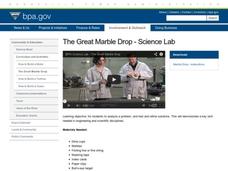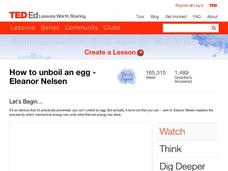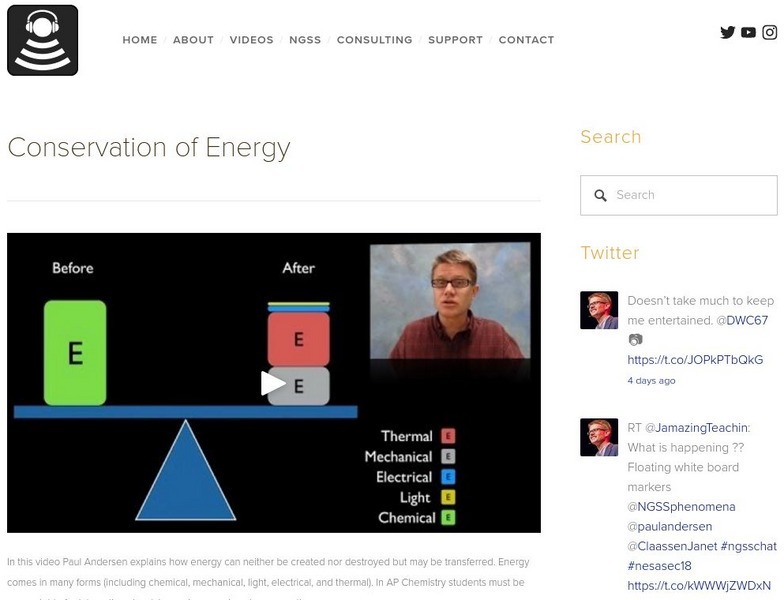TED-Ed
How to Squeeze Electricity Out of Crystals
It is possible to generate electricity by squeezing a single sugar crystal. A short video explains how this is possible and the way this knowledge has changed our society. From sonar devices to renewable energy, generations rely on this...
Bonneville
The Great Marble Drop
Mike and Kellie, a team of electrical engineers, demonstrate how to to design a contraption that accurately drops a marble onto a target. The materials needed and general instructions are provided on the website or via a downloadable...
Scholastic
Study Jams! Energy & Matter
After Sam knocks a glass off the lunchroom table, he uses it as a springboard for explaining kinetic and potential energy. He mentions that sound is a type of kinetic energy and introduces the different forms of energy: thermal,...
TED-Ed
The Surprising Reason Our Muscles Get Tired
Does pain really indicate gain when it comes to muscle aches? A short, animated video details the science behind the pain associated with muscle fatigue.
PBS
Putting Energy to Use
From burning wood for heat to riding a bicycle, converting one form of energy into another is an everyday process! Using a video clip, learners discover the sources of the thermal, mechanical, and electrical energies that make our lives...
Real Engineering
Steam Engine—How Does It Work?
Full steam ahead! A video in the Real Engineering playlist shows viewers how steam engines work. the video starts with an explanation of the inefficient steam engines from before the Industrial Revolution and ends with modern steam...
American Chemical Society
What Is Energy?
Kids sure do seem to have a lot of energy, but what exactly is energy? A video explains many different types of energy, starting with potential and kinetic. It highlights the most common forms of potential energy, including...
National Science Foundation
Science of NFL Football: Kinematics
Describe the motion of a football running back using physics kinematics. The seventh lesson in a series of 10 video lessons describes the velocity, acceleration, and position of key plays on the football field. Individuals learn the...
Flipping Physics
AP Physics 1: Simple Harmonic Motion Review
Does your class feel unprepared for the upcoming exam? Use this video to review the simple harmonic motion concepts that will appear on the AP Physics exam. While maintaining interest and a fast pace, the presenter not only reviews...
TED-Ed
How to Unboil an Egg
If you believe hard boiling an egg to be an irreversible process, then think again! Take a few minutes to watch this fun video as it explores the process for unboiling an egg and learn about the applications this process...
Steve Spangler Science
Magic Rollback Can - Sick Science! #051
Have your class explore potential and kinetic energy or conservation of energy. They can make a device called a rollback can. Like magic, the can returns to where it started after it has been pushed away.
Bozeman Science
Bozeman Science: Conservation of Energy
In the following video, Paul Andersen explains how energy can neither be created nor destroyed but may be transferred. Energy comes in many forms. [4:09]
Sophia Learning
Sophia: Introduction to Energy
An introduction to the definition of energy as it relates to physics. [1:22]
Sophia Learning
Sophia: Practice With Conservation of Energy
Watch this video which provides example problems using the simplified conservation of energy equation. [7:47]
PBS
Nova Labs: Putting Energy to Use
Energy comes in many different forms. It can be stored in the chemical bonds that hold molecules together, carried in the motion of a spinning wheel, or held in a boulder sitting on a cliff. But energy isn't a fixed thing. In fact, we...














